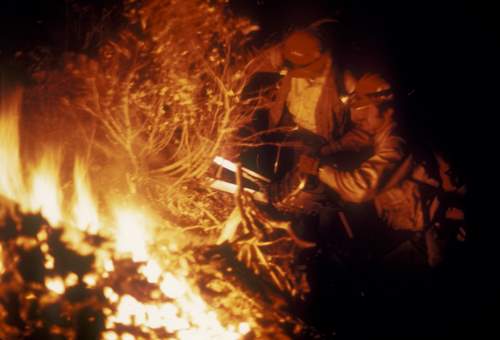
A tractor-trailer that slowed as it traveled through a cloud of smoke from a controlled burn near the highway led to a chain-reaction crash on Interstate 15 near Conrad May 3, killing two young women from Columbia Falls.
A chain reaction series of crashes began when a tractor trailer slowed to 25 mph as it entered the smoke according to the Montana Highway Patrol (MHP). A second tractor trailer plowed into the first, then a sedan with the two women hit the second truck and a fourth vehicle, a sedan, hit the vehicle with the two women, who died at the scene. Four people in the fourth vehicle were injured.
The crash occurred at approximately 1:15 p.m. on I-15 at mile marker 344, about five miles north of Conrad, 0.78 mile south of Ledger Road (MT 366).
During a 2:54 p.m. MDT overflight on the day of the crash a satellite detected heat from a fire just west of the location of the crash reported by the MHP. According to Google Earth imagery virtually everything within a mile of the site, other than roads, is agricultural fields, including the location of the detected fire. It appears likely that the controlled burn was from agricultural or debris burning, rather than a prescribed burn used by land managers to reduce hazardous fuels or restore fire to a fire dependent ecosystem.
Thanks and a tip of the hat go out to Dick.


















